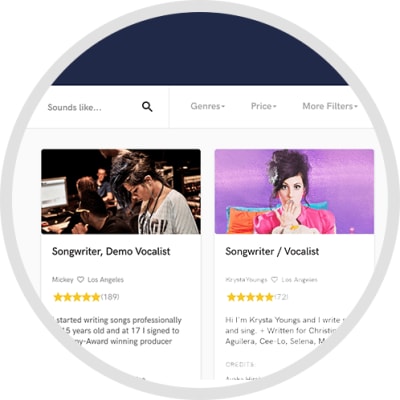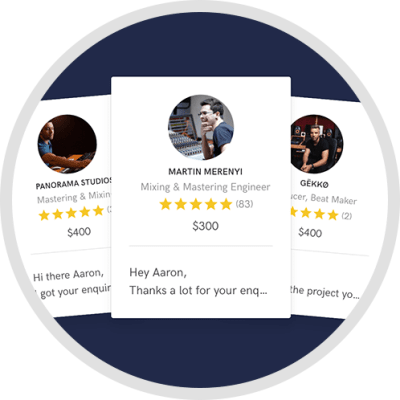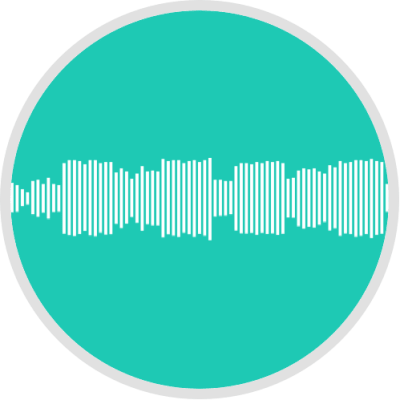
I master music through the Home Studio Valve Sound System — a hand-built 6-way monitoring setup powered by Yamaha amps. I blend analog warmth, studio precision, and real sound system pressure for Drum’n’Bass, Metal, Rock, and Hip-Hop.
Welcome to the Home Studio Valve Sound System, my hand-built 6-way mastering and monitoring setup powered by Yamaha amps and custom Beyma/JBL/FaitalPro drivers.
I specialize in analog-inspired mastering that keeps the warmth, weight, and dynamic energy of the mix intact — not over-compressed, not lifeless.
My process blends studio precision with sound system power: I tune by ear, align every driver in time and phase, and listen for the emotional core of the music.
Whether you produce Drum’n’Bass, Metal, Rock, or Hip-Hop, I’ll help you reach that perfect balance between clarity and impact — from deep sub-bass to shimmering highs.
Every master I deliver is crafted to sound alive on any system — club, car, or home.
Let’s bring your mix to its final form.
Contact me through the green button above and let's get to work.
Credits
Languages
- English
- French
- Italian
- Spanish
Interview with Adam B Home Studio Valve Sound
Q: Tell us about a project you worked on you are especially proud of and why. What was your role?
A: One of the projects I’m most proud of is building and mastering through my own Home Studio Valve Sound System. It started as an experiment — could I create a mastering setup that feels like a real club stack, but with surgical precision? I designed, tuned, and aligned every element by hand: FaitalPRO, JBL, and Beyma drivers, powered by Yamaha amps, all measured and balanced by ear. The first time I mastered a Drum’n’Bass track through it, I felt the air move exactly like the old Valve Sound System days — pure pressure, pure life. That’s when I knew this setup wasn’t just a tool — it was an instrument.
Q: What are you working on at the moment?
A: I’m currently mastering a series of Drum’n’Bass and Metal projects — exploring the balance between weight and clarity. I’m also fine-tuning my Home Studio Valve Sound System, testing new crossover curves and time alignments for even tighter phase control. Between sessions, I’m studying and listening to Warp Records releases — Aphex Twin, Autechre, Boards of Canada — to stay inspired by their timeless sense of depth and space. Every week, the sound evolves — always closer to perfection, always alive
Q: Is there anyone on SoundBetter you know and would recommend to your clients?
A: I mostly work independently, but I always respect true craftsmen of sound — people who care about quality over trends. If I recommend anyone, it’s those who share the same philosophy: real ears, real sound, real passion. Collaboration only makes sense when everyone works for the music, not for the algorithm.
Q: Analog or digital and why?
A: Both — because the soul of sound lives in the space between them. Analog gives warmth, weight, and imperfection — the heartbeat of real sound. Digital gives precision, recall, and clarity — the mind that shapes the chaos. I use both together: analog-inspired monitoring and signal paths, digital precision for mastering and alignment. The result is music that’s powerful, clear, and human — old soul, modern heart.
Q: What's your 'promise' to your clients?
A: My promise is simple: I’ll treat your music like it’s my own. Every master I deliver is built with care, precision, and respect for your sound — no shortcuts, no presets. I’ll make sure your track hits with power, clarity, and warmth, without losing its emotion or identity. My goal is not just to make it louder — but to make it alive.
Q: What do you like most about your job?
A: What I love most about my job is the moment when a track comes alive — when every frequency connects and the music starts to breathe. I love feeling the air move, the pressure building, the warmth spreading through the room. That instant when an artist hears their song mastered for the first time and says, “That’s it — that’s what I imagined.” That’s the magic.
Q: What questions do customers most commonly ask you? What's your answer?
A: The most common question I get is: “Can you make my track louder without losing dynamics?” My answer: yes — but only if the mix already breathes. Loudness isn’t about crushing the sound; it’s about finding the balance between power, clarity, and life. I use analog-inspired mastering chains and my hand-built 6-way Home Studio Valve Sound System to shape each track until it hits hard and still feels natural.
Q: What's the biggest misconception about what you do?
A: The biggest misconception is that mastering is just making a track louder. It’s not about volume — it’s about balance, depth, and emotion. Real mastering gives a song space to breathe, connects every frequency, and makes the energy flow naturally. I don’t chase numbers or trends — I chase the moment when a mix suddenly feels alive.
Q: What questions do you ask prospective clients?
A: Before starting any project, I always ask: • What’s the emotion or story behind your track? • What are your main references or favorite mixes? • Do you want a master that’s warm and smooth, or punchy and aggressive? • Where will your music be played — streaming, club, vinyl, or all of them? • What do you want the listener to feel when the track hits? These answers help me shape a master that fits your world, not just your waveform.
Q: What advice do you have for a customer looking to hire a provider like you?
A: Don’t choose an engineer just for the tools — choose one for the ears and the attitude. Look for someone who listens to your track, not just measures it. Ask questions, talk about your sound, and trust the process — real mastering takes communication, not presets. In the end, a great master doesn’t just sound louder — it feels alive.
Q: If you were on a desert island and could take just 5 pieces of gear, what would they be?
A: Yamaha P2200 amplifier — pure analog warmth and endless reliability. MOTU M4 interface — clean, detailed, and simple enough to survive anywhere. Beyma 12BR70 driver — my favorite for real, breathing mids. sirus pro dxl 2006 — for phase, balance, and keeping everything aligned. My soldering iron — because even on a desert island, something will need fixing.
Q: What was your career path? How long have you been doing this?
A: I’ve been working with sound for over 20 years, starting as a live and industrial electrician before building my own sound systems from scratch. My passion for music and frequencies led me from DJing and vinyl collecting to designing and mastering on my custom Home Studio Valve Sound System. Over the years, I’ve learned that true sound doesn’t come from software — it comes from experience, balance, and the air moving in front of you. Every project I take on carries that same mix of craftsmanship, emotion, and raw power.
Q: How would you describe your style?
A: My style combines analog warmth, studio precision, and sound system power. I work by ear, not by preset — shaping each frequency until the mix feels alive and balanced. I love music that moves air and emotion, from the pressure of Drum’n’Bass to the weight of Metal and the groove of Hip-Hop. My masters sound deep, dynamic, and human — modern clarity with a classic soul.
Q: Which artist would you like to work with and why?
A: I’d love to work with Dillinja — his sense of pressure, weight, and movement shaped the way I hear bass. His mixes breathe power and warmth, like a living machine. I’d also love to collaborate with Meshuggah or Fear Factory, to explore the meeting point between mechanical precision and organic chaos. Artists like these understand that sound isn’t decoration — it’s architecture, emotion, and electricity.
Q: Can you share one music production tip?
A: Trust your ears, not your eyes. Meters, analyzers, and plug-ins can guide you — but music lives in the space between frequencies, not inside the graph. Listen at different volumes, take breaks, and feel the air move. If it feels alive, it is alive.
Q: What type of music do you usually work on?
A: I usually work on Drum’n’Bass, Jungle, Metal, Rock, and Hip-Hop — music with real dynamics, emotion, and physical energy. I love mastering tracks that push air and attitude, from deep sub pressure to sharp transients. My studio setup lets me capture both the warmth of analog and the clarity of modern digital precision.
Q: What's your strongest skill?
A: My strongest skill is hearing balance and energy by ear — knowing exactly where warmth, weight, and clarity should live in a mix. I don’t rely on visual meters or presets; I trust years of real listening through my hand-built 6-way Home Studio Valve Sound System. It lets me shape sound that’s powerful, natural, and emotionally alive
Q: What do you bring to a song?
A: I bring energy, depth, and emotion — the feeling that music is alive, not just loud. My goal is to preserve the soul of the mix while enhancing its clarity, power, and warmth. With my hand-built 6-way Home Studio Valve Sound System, I can hear and shape the full spectrum — from the deepest sub to the highest air. I work by ear, not by presets, to give every track its own identity and weight. The result is a master that hits hard, feels natural, and breathes like a live performance.
Q: What's your typical work process?
A: Every project starts with careful listening — I study the mix to understand its energy, balance, and emotion. I then run the track through my hand-built 6-way Home Studio Valve Sound System, powered by Yamaha amps, to hear every detail in full dynamic range. The mastering chain blends analog-inspired EQ, dynamic control, and phase alignment, all tuned by ear rather than presets. I make subtle adjustments until the track breathes — warm lows, clear mids, and smooth highs. Before delivery, I test every master on multiple listening setups to ensure it translates perfectly everywhere — from club systems to headphones.
Q: Tell us about your studio setup.
A: My studio is built around the Home Studio Valve Sound System — a fully hand-crafted 6-way monitoring setup designed for mastering and precision listening. It’s powered by Yamaha P-Series amps and driven through Beyma, JBL, and FaitalPRO drivers, delivering full-range response from 15 Hz to 20 kHz. Processing and alignment are handled with dbx DriveRack PA2 and AD Systems controllers, all tuned entirely by ear for perfect phase and natural tone. I record and finalize projects through a MOTU M4 interface, capturing at 192 kHz / 24-bit with Adobe Audition. Everything here is about real energy, analog warmth, and surgical clarity — designed to make every frequency breathe.
Q: What other musicians or music production professionals inspire you?
A: I’m inspired by producers and engineers who build their own sound from the ground up — people like Dillinja, Dom & Roland, Goldie, and Photek for their raw Drum’n’Bass energy. In the rock and metal world, I draw from Andy Sneap, Fear Factory, and Meshuggah — precision, weight, and controlled chaos. From the analog and groove side, Dr. Dre, Rick Rubin, and ZZ Top’s Billy Gibbons remind me that warmth and simplicity can hit harder than complexity. I’m inspired by anyone who treats sound as something alive — not just something to measure.
Q: Describe the most common type of work you do for your clients.
A: The most common work I do is audio mastering — bringing clarity, warmth, and impact to Drum’n’Bass, Metal, Rock, and Hip-Hop tracks. I focus on dynamic range, frequency balance, and physical energy, using my hand-built 6-way Home Studio Valve Sound System powered by Yamaha amps. Each project is tuned by ear to feel alive — from deep sub-bass to crystal highs.
- Mastering EngineerAverage price - $70 per song
- Mixing EngineerAverage price - $100 per song
- Podcast Editing & MasteringAverage price - $75 per podcast
- ProducerAverage price - $100 per song
- Post MixingAverage price - $100 per minute
• Standard turnaround time: 3–5 business days per track.
• Up to 2 revisions are included — additional revisions available upon request.
- Dillinja
- Meshuggah
- Dr. Dre
- Monitoring & System Design Custom 6-way Home Studio Valve Sound System built by hand & Recording MOTU M4
- Adobe Audition 192 kHz / 24-bit capture chain. Listening Philosophy All tuning done by ear — analog soul
- digital precision
- real pressure.



